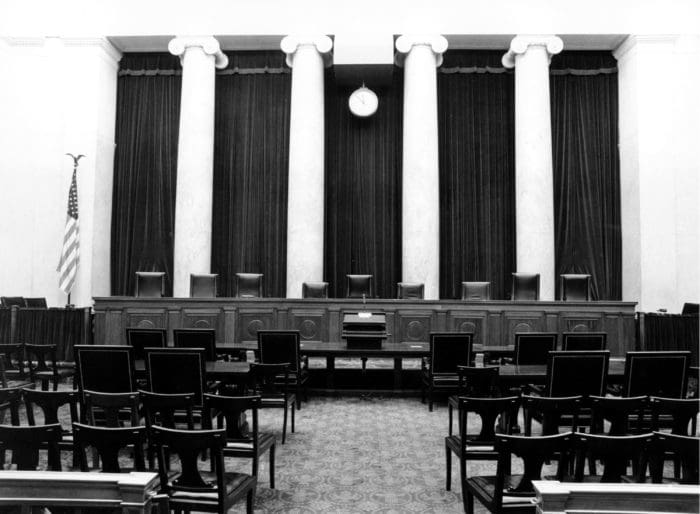It’s finally dawned on Democrats in Washington that they probably can’t stop the confirmation of Judge Amy Coney Barrett to the Supreme court. That means it’s time to change the rules, which is why we’re hearing more calls for steps like statehood for D.C. and Puerto Rico and packing the Supreme Court .
But why stop there? Democrats are also reportedly planning to introduce a bill to limit the terms of Supreme Court justices. Rep. Ro Khanna is reportedly going to introduce the “Supreme Court Term Limits and Regular Appointments Act.”
From the Washington Times:
The bill would give each president the right to pick two justices per 4-year term and limit those choices to 18 years on the high court.
There’s only one problem with that.
The House Democrats’ bill raises constitutional questions, because the document grants life tenure to federal judges, both “of the supreme and inferior courts.”
That pesky Constitution just keeps getting the way.
In principle, I don’t object to term limits for judges. It provides a way to eventually get rid of a judge who simply can’t abide the Constitution without going through the political hassle of impeachment. But automatically giving each President two court appointments per term is a nightmare. With the Democrats fully expecting to win, steal, or tantrum their way into the White House next year, the negative Second Amendment implications of such a change are clear.
I wish I could read the actual text of the bill (it doesn’t seem to be on any of the sponsors’ web sites yet), because I can’t logically see a way to do this without a Constitutional amendment. You’d think the Rep. Khanna would know that, but he’s a California Democrat so it’s dangerous to assume anything.
Rep. Khanna has come up with what he thinks is a brilliant dodge to get around the constitutional issue.
Mr. Khanna told Reuters that his bill, which is not a constitutional amendment as most legal scholars have argued would be needed to end life tenure for federal judges, is consistent with that provision because the appointed justices would remain federal judges once their 18-year high court tenure is up.
Once term-limited, the former justices would become “senior” judges and rotate to lower federal courts, according to Reuters. The bill also would not affect the tenure of justices currently on the Supreme Court.
That last line is a puzzler. If the currently sitting justices keep their lifetime tenure, then this bill would have no effect for a minimum of 18 years, short of packing the court (Ginsberg’s replacement would be term limited).
For once, Democrats might be taking the long view here. Of the semi-reliably conservative justices, only two are under the age of 70 while three solid liberals are under 70 (yes, I’m including Roberts, here). Or the exemption for current Justices might be there simply to give the bill some chance of passing.
Does the appointment of two judges per term start right away, packing the court? Or would the bench remain at total of nine seats? Details matter.
Khanna pretends that “judge” is just a single office; that all judges have the one office of “Judge,” but sometimes differing duties. So taking a judge off of SCOTUS duty and bumping him or her down to “senior judge” status with differing duties is all peachy so long as the pay check stays the same.
The Constitution begs to differ. As usual.
Article III, Section 1
The judicial Power of the United States, shall be vested in one supreme Court, and in such inferior Courts as the Congress may from time to time ordain and establish. The Judges, both of the supreme and inferior Courts, shall hold their Offices during good Behaviour, and shall, at stated Times, receive for their Services, a Compensation, which shall not be diminished during their Continuance in Office.
One supreme Court and inferior Courts. Both the supreme and inferior Courts. Hold their offices…plural. Different offices. Being a judge of the Supreme Court is rather obviously a separate office than being a “Senior Judge” of a lower court.
For once, I think judges would agree with my assessment of this proposal being unconstitutional, especially since it affects them.
